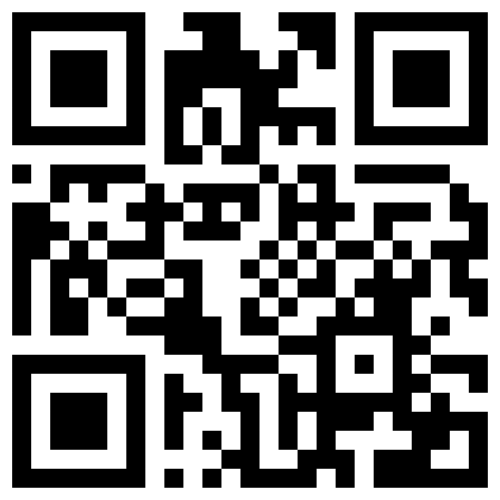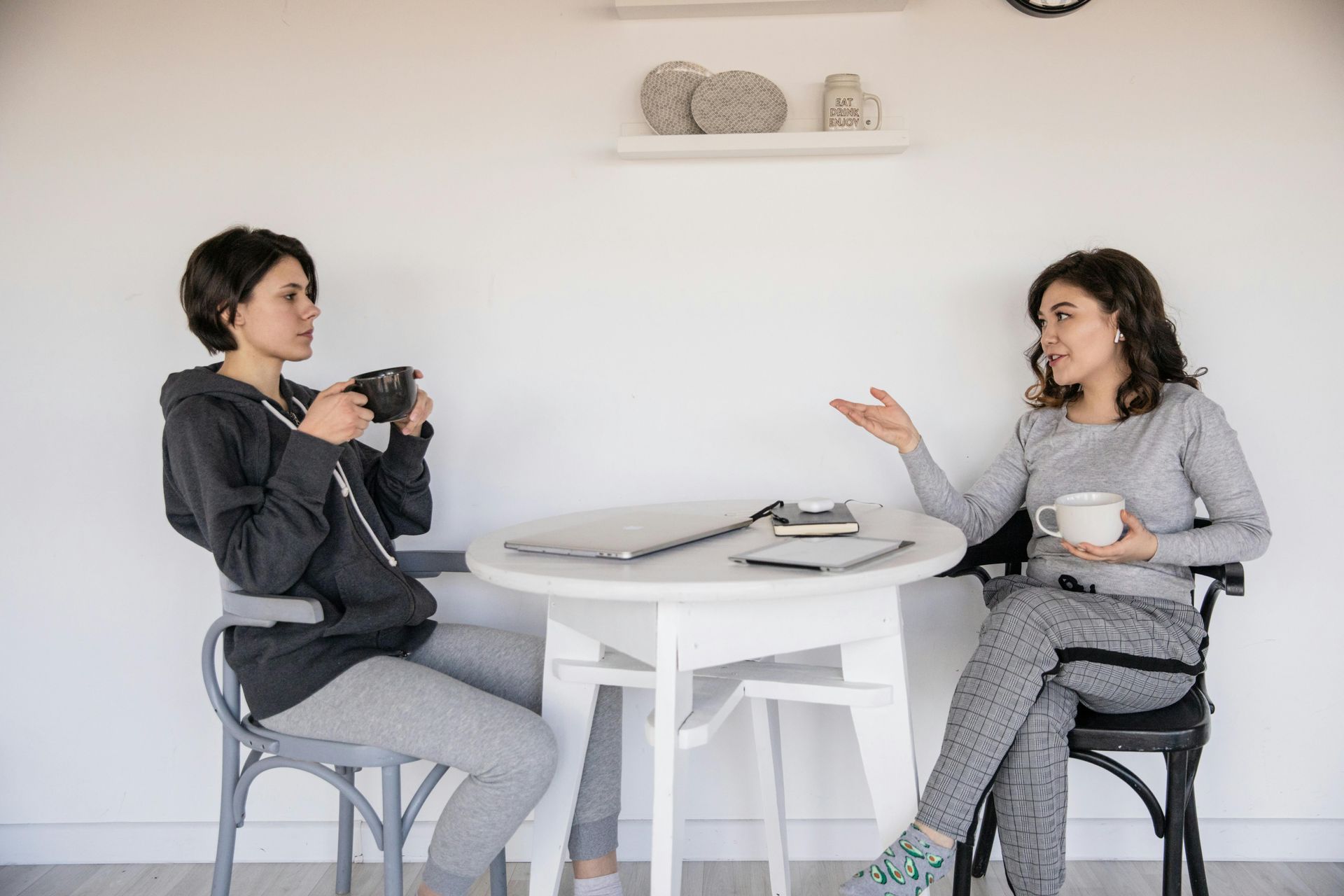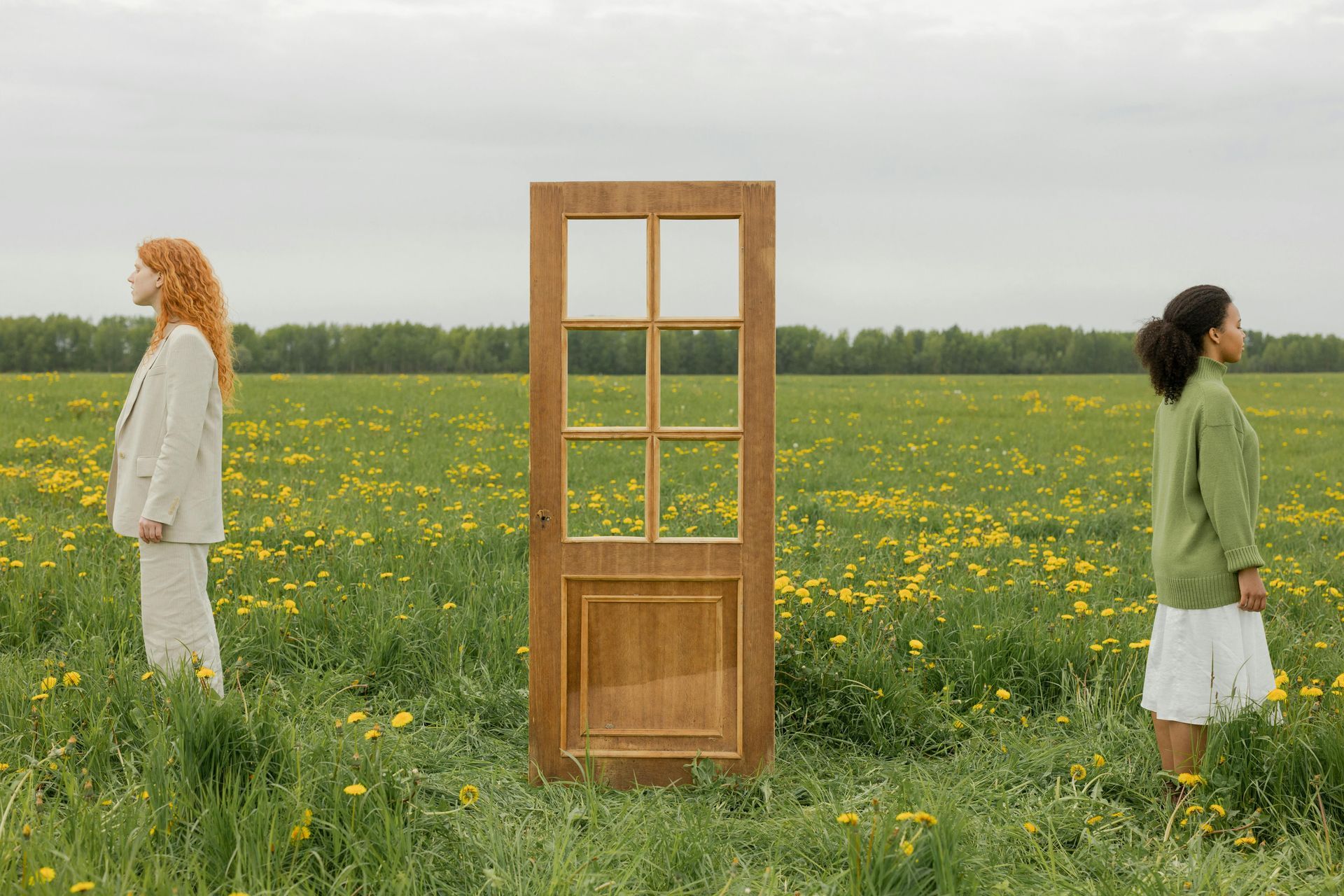Trauma Therapy Homework - Week 24
Week 24: (The Basics) Relationship Mini Series
Attachment
Welcome to Week 24 of trauma therapy homework. If you’ve made it this far, take a moment to celebrate your consistency and commitment. This week, we’re diving into a topic that sits at the very heart of how we relate to ourselves and others: attachment. Attachment is all about connection—how we bond, how we feel safe (or unsafe) with others, and how those early experiences shape the way we approach relationships today. Whether you’re learning to build healthy relationships for the first time or you’re deep into your journey, understanding your attachment style can be a powerful tool for growth.

What Is Attachment?
At its core, attachment is our nervous system's blueprint for connection. It’s shaped early in life by how our caregivers responded to us. If our needs were met with love and safety, we learned that people can be trusted. If they weren’t, we may have learned that the world isn’t safe, or that our feelings and needs don’t matter. This pattern doesn’t disappear when we grow up. It shows up in how we relate to friends, partners, family—and even ourselves. But here’s the good news: your attachment style is not set in stone. Healing is possible. Let’s look at the four main attachment styles and how they might show up in adult life. As you read further, keep in mind: attachment isn’t all-or-nothing. You might feel secure with one person and anxious with another. You might avoid closeness in some relationships and crave it in others. It is normal to have different attachment styles with different people. It may help to just be able to name when and how that is coming up for you.
The Role of Co-Regulation in Attachment
One important part of attachment is called co-regulation—the way we can manage our emotions through the presence and attunement of another person and their nervous system. When we are infants, we can't regulate our own nervous systems. We rely completely on our caregivers to help us feel safe, calm, and soothed. This means our earliest nervous system patterns are shaped in relationship. When a caregiver consistently responds to a baby's cries with warmth and comfort, the child begins to internalize a sense of safety. Over time, this teaches a child to learn to calm and soothe themselves, laying the groundwork for processing emotions, tolerating higher levels of distress, and the capacity to stay connected during difficult moments. However, if caregivers are neglectful, unpredictable, or frightening, they are not co-regulating; they are dysregulating. The child then learns to suppress emotions, act out, or disconnect entirely. Understanding the role of co-regulation can help explain why certain relationship dynamics feel so overwhelming. As adults, we can relearn co-regulation in healthy relationships.
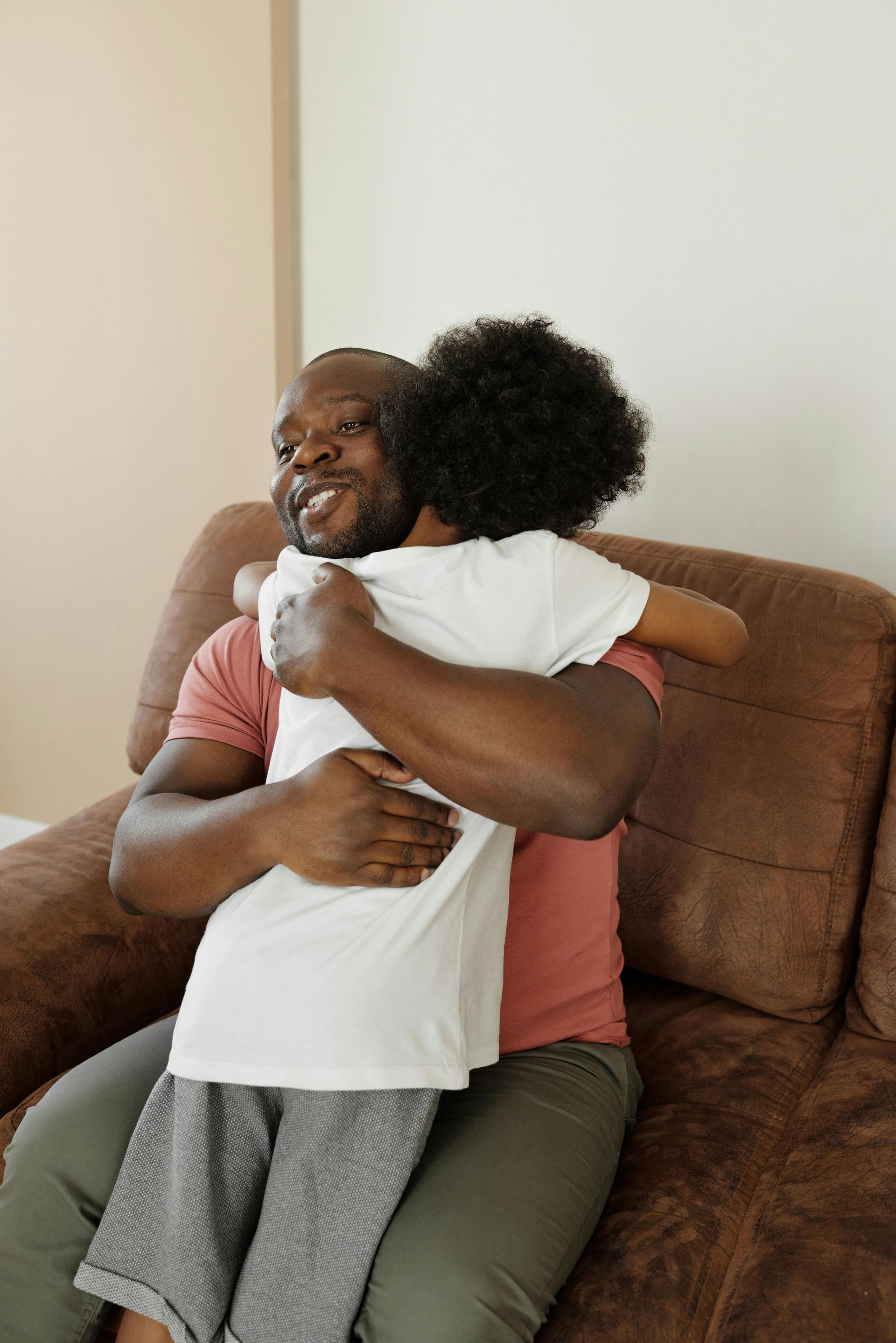
Attachment Styles
Anxious Attachment
If you tend to worry about being abandoned, feel preoccupied with your partner's needs over your own, or experience a lot of fear and urgency around closeness, you might relate to anxious attachment. People with this style often had caregivers who were inconsistent—sometimes warm and available, sometimes withdrawn or distracted. This unpredictability teaches a child to stay hyper-vigilant, always scanning for signs of connection or rejection. As adults, this can show up as needing constant reassurance, feeling like you're "too much," or having difficulty calming down when there's conflict. If you are engaging in anxious attachment behavior, this is called the "pursuer". This means you tend to move toward connection when there’s conflict or distance, often seeking reassurance, closeness, or resolution. You might feel a strong urgency to fix things quickly, talk about the problem, ask the other person questions, and feel triggered if the other person pulls away. You might find yourself engaging in anxious attachment behaviors and taking on the role of the pursuer at times, even if that isn’t your primary attachment style in that relationship. These patterns can shift depending on the dynamic, stress level, or emotional stakes involved.
Avoidant Attachment
If you value independence to a fault, find it hard to ask for help, or feel uncomfortable with emotional closeness, you might lean more avoidant. This attachment style often develops when caregivers were emotionally unavailable, dismissive, or overwhelmed. These children learn to self-soothe, not because they want to, but because they had to. As adults, avoidantly attached individuals often struggle to let others in and might shut down when relationships get emotionally intense. You might feel safest when you're not depending on anyone—but this can also feel lonely. If you are engaging in avoidant attachment behavior, this is called the "withdrawer". This means you tend to pull away or shut down when emotions run high, often needing space to regulate or feeling overwhelmed by closeness. You might prioritize independence and self-reliance, sometimes at the expense of emotional intimacy. You may withdraw during conflict and spend more time alone. Anyone can take on the role of the withdrawer at times, even if avoidant attachment isn’t your dominant style in that particular relationship. It often depends on the dynamic, the situation, and how emotionally safe or overwhelmed you feel in the moment.
Disorganized Attachment
Disorganized attachment (also called fearful-avoidant or anxious-avoidant) is a bit more complex. It can look like swinging between craving closeness and pushing people away, between anxious and avoidant attachment. People with this style often experienced caregivers who were frightening, unsafe, abusive, and deeply unpredictable—perhaps both the source of comfort and harm. As adults, this can feel like being torn. You want connection, but it feels dangerous. You might find yourself in push-pull dynamics, feeling overwhelmed by intimacy but also terrified of being alone. If this sounds like you, it's not your fault. This attachment style often develops in the context of trauma.
Secure Attachment (and How to Move Toward It)
Secure attachment is about feeling safe, seen, soothed, and supported—and being able to offer that to others. People with secure attachment can tolerate emotional closeness, handle conflict with respect, and trust that they are worthy of love. Research shows that secure attachment is created when a caregiver is attuned to a child's needs a minimum of 30% of the time.
If you didn’t grow up with this kind of connection, that doesn’t mean you can’t learn it now. Through therapy, self-reflection, safe relationships, or nervous system regulation, it's entirely possible to develop more secure attachment patterns. Healing means learning that you can express needs without shame, be close without losing yourself, and handle conflict without fear of abandonment (in the context of secure relationship). It means becoming a safe base for yourself, even when others can't.

20 Tips for Developing More Secure Attachment
- Notice your triggers: Become aware of moments when you feel panicked, shut down, or overly preoccupied in relationships.
- Practice naming your needs: Saying, "I need reassurance" or "I need some space" is a powerful skill.
- Slow down: Take your time in relationships. Secure attachment grows through safety, not urgency.
- Challenge all or nothing thinking: If your brain goes to extremes ("They hate me" or "I can’t trust anyone"), pause and reassess.
- Validate your feelings: Your emotions make sense given your history. Try and have compassion on them.
- Learn to self-soothe: Develop calming practices to regulate your own nervous system and process your emotions.
- Create rituals of connection: Even small, consistent gestures build safety (daily check-ins, hugs, goodnight texts).
- Use "I" statements: Communicate your experiences without blaming others.
- Stay present during conflict: Try not to escape or escalate. Breathe and stay with the discomfort. You can ask for a pause if needed.
- Repair after ruptures: Conflict is normal. What matters is how you repair. Practice apologizing without explaining or defending.
- Ask for clarification: If something feels off, ask rather than assume.
- Set boundaries: It’s okay to say no. Healthy limits create trust.
- Be curious, not critical: Ask yourself, "What might this reaction be trying to protect?"
- Seek secure relationships: Spend time with people who are consistent, kind, and emotionally available who leave you feeling full.
- Practice receiving care: Let others help, listen, or support you—even if it feels unfamiliar.
- Name your attachment styles: Awareness is the first step to healing.
- Share your process: Let trusted others know you're working on this. Invite support.
- Celebrate small wins: Every time you stay present, express a need, or regulate your nervous system—that matters.
- Fine one person who is a safe base: This can be your therapist, your friend, or your partner, just find one safe relationship to feel security.
- Be patient: Attachment healing is slow, deep work. You're not behind.

Trauma Disclaimer
Working toward secure attachment is a beautiful goal—but it should only be done in the context of safe relationships. This work is not meant to help you tolerate, repair, or remain connected to people who are abusive, toxic, or actively harming you. Trying to practice secure attachment skills with unsafe people can actually increase your safety risk, and frankly, it is impossible to build secure attachment in an abusive context.
Safe people aren’t perfect, but they are respectful, emotionally responsive, and willing to grow. They make room for your feelings without dismissing them. They take accountability for how they have done harm. If you're unsure whether a relationship is safe, that’s a great topic to bring up with another person you trust who feels safe. Your nervous system deserves safety. Healing happens when you work on attachment in spaces that are safe.
Final Thoughts
Attachment work is brave work. It asks us to examine some of our earliest wounds and rewrite old scripts about love, safety, and belonging. But with compassion, consistency, and support, it is possible to move toward the kind of connection we all deserve. Healing your attachment wounds is not a quick fix—it’s a lifelong relationship with yourself and the people you choose to let in. It’s the process of unlearning survival strategies that once kept you safe, and slowly replacing them with patterns that make room for connection, consistency, and mutual care. Some days, it might feel messy. You may catch yourself falling into old habits or reacting from a place of fear. That’s okay. Growth isn’t linear, and setbacks are part of the process. The important thing is to keep showing up for yourself with honesty and compassion. You are not broken. Your attachment style is a reflection of your past, not a definition of your worth or your future. Each small act of self-awareness, each moment of vulnerability in safe spaces, and each effort to stay present in safe relationships is a step toward security. Keep practicing. Keep learning. You are doing great work.
FREE Downloadable Handouts
Click this LINK for free access to downloadable PDFs from the Trauma Therapy Homework Series. You’ll be directed to my Google Drive folder, where you can explore all the handouts created so far. You can choose between a digital format for easy viewing on your device or a printable version if you prefer a hard copy.
Here is a preview of this week's handout! Click the link above to get your own free pdf copy.
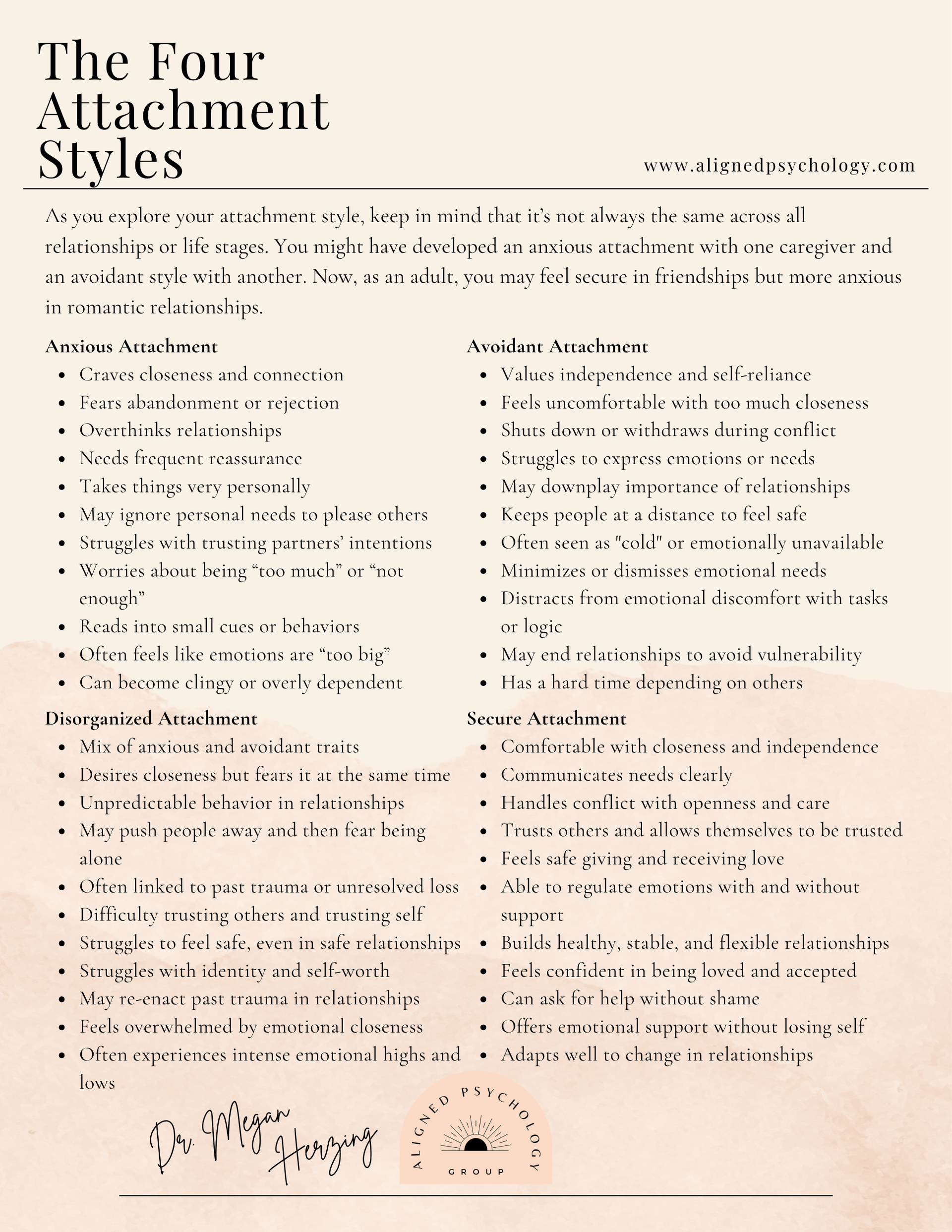
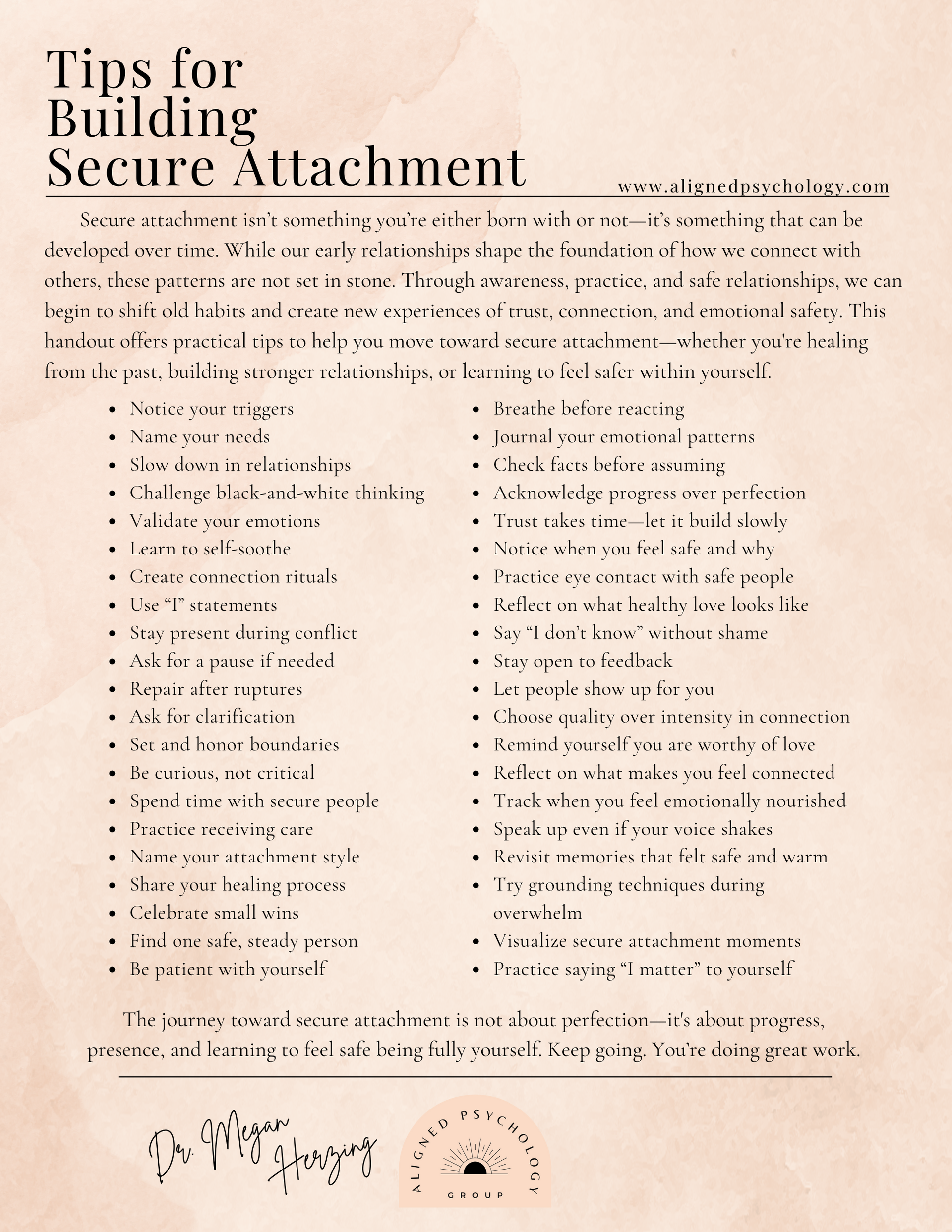
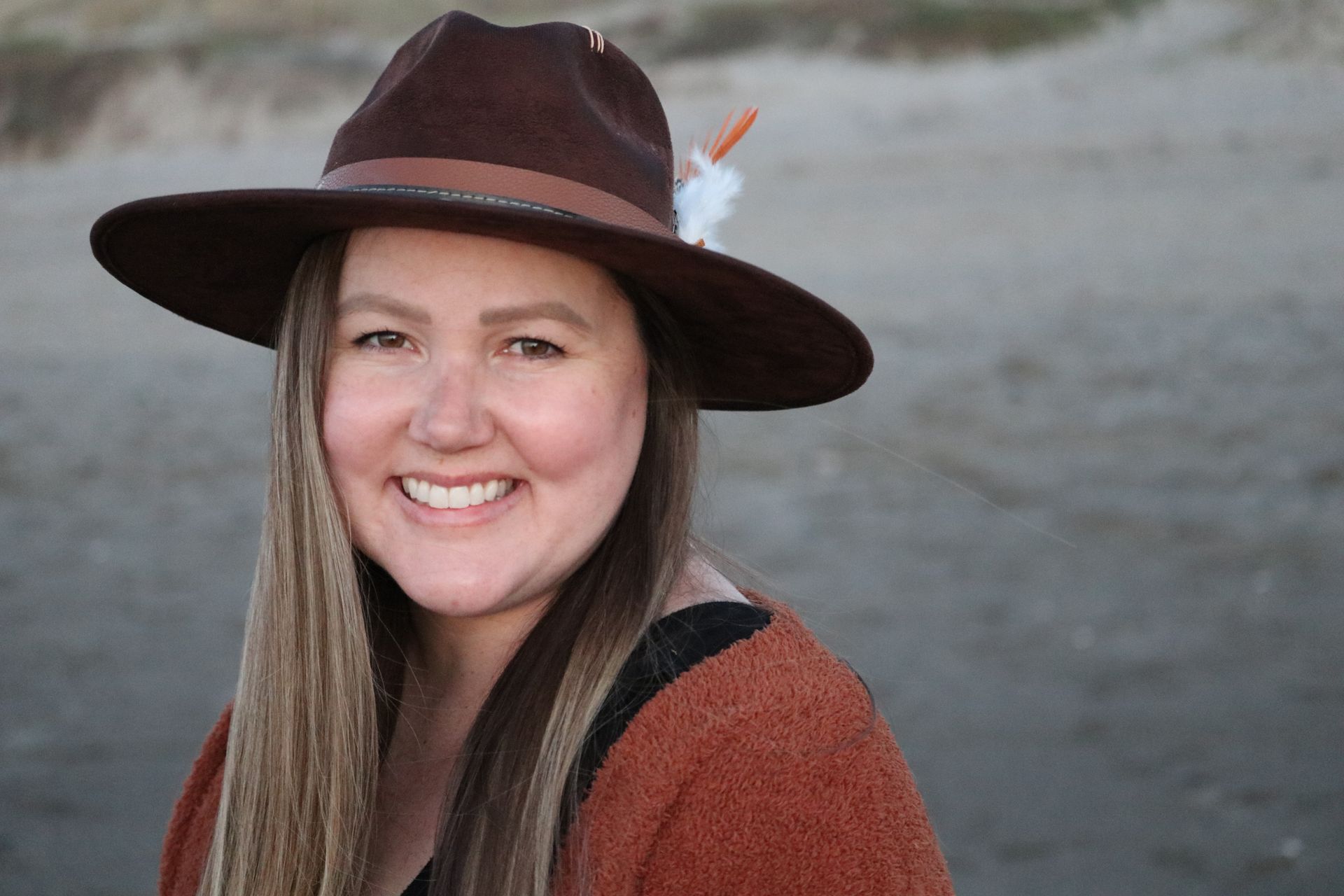
ABOUT THE AUTHOR
Dr. Megan
Megan Herzing PsyD, Licensed Professional Clinical Counselor, specializes in trauma therapy and creating a safe, supportive space for healing. She integrates evidence-based modalities, including EMDR, Internal Family Systems (IFS), somatic therapy, and Emotionally Focused Therapy (EFT), to address the mind-body connection and empower clients on their journey to wellness. With extensive experience treating complex PTSD, anxiety, attachment injuries, and dissociation, she believes in the power of self-compassion and authentic connection to facilitate lasting change. Drawing from her own healing journey, she brings empathy and lived experience to her work, honoring each client’s unique path toward growth and resilience.
Thank you for being part of a community of humans that deeply cares about healing.
We are honored that you stopped by and hope our resources will continue to bring value to your life.
We are accepting new clients in California, and referrals are always appreciated.
